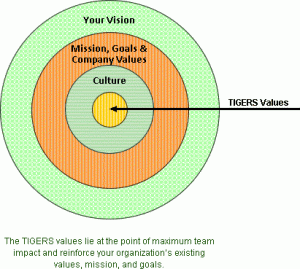
With team building strategies in place, leaders can improve their own EQ, as well as that of their employees, which will improve overall communication and diminish conflict in the workplace.
Team building strategies for improving your emotional intelligence
Recognize the signs of low EQ.
The first step in resolving an issue is recognizing that a problem exists. An employee’s EQ can account for up to 80 percent of their success, which contributes to the success of the company as a whole. The problem, however, is that many leaders and team members have an inflated view of their own EQ. Without an accurate view of their current skill set, leaders and team members won’t invest the proper amount of time and energy toward improving their skills. Some signs that your EQ could improve include:
- High turnover rates of employees directly below you;
- few internal candidates for open positions; and,
- a lack of small talk between you and your employees.
When employees quit, they are more than likely to quit because of their boss, and not necessarily the organization. So if your department has higher-than-normal rates of employee loss, and few employees that want to transfer into your department, it’s a good sign that you need to look within to your EQ and leadership style.
Watch out for aggressive communicators.
In order for effective communication to exist in your organization, everyone needs to understand the best strategies for communicating with the team. One major kink in the system is found in aggressive communicators. Aggressive communicators often believe that their solutions are the best, are close-minded to other ideas and are poor listeners who consistently ask others to repeat themselves. This type of communicator can cause costly repercussions for organizations, especially when they are in leadership roles. After feeling degraded, ignored and inadequate, team members will respond with absenteeism, disengagement and even work sabotage. This type of communicator likely requires training to understand how their words and actions affect others and how to change the way they communicate to create a collaborative and peaceful working environment.
Pay attention to your body language.
When you communicate, your nonverbal cues and body language play a large part in how you are received and understood. Body language, the gestures you make and the look on your face, accounts for more than 93 percent of the meaning in your message. This means that the actual words you use only account for 7 percent of the message. Leaders and team members alike must understand how their nonverbal cues are affecting their messages, and they need to actively strive to improve their nonverbal communication strategies. Some ways that leaders and team members can do this is by leaning forward and looking at the speaker to show that they are actively listening; making eye contact, though not constant eye contact; and paying attention to the tone of their voice to match their message. By paying attention to your nonverbal cues, you can improve your effectiveness while communicating.
Effective communication in the workplace is one of the most essential aspects for success, and employees on all levels need to understand how to effectively communicate with one another. Emotional intelligence plays a large role in an individual’s effectiveness, but because this is a soft skill, it’s harder to measure and track improvement, which is why proven training programs are so valuable to companies. Other team building strategies that leaders and team members can employ to improve their emotional intelligence include: recognizing the signs of low emotional intelligence; identifying and training aggressive communicators; and placing value on and remaining acutely aware of your body language while communicating. By implementing these strategies, leaders and team members can improve their EQ and communication skills that improve business revenue.
Here are some additional articles worth reviewing:
- 5 Simple Signs That Your EQ Needs Some Attention
- How to Spot Aggressive Communicators and What to Do About It
- 5 Ways to Dramatically Improve Your Communication (Without Saying a Word)
Copyright TIGERS Success Series, Inc. by Dianne Crampton
 About TIGERS Success Series, Inc.
About TIGERS Success Series, Inc.
TIGERS Success Series is a Bend, Oregon Leadership and Team Improvement Consultant that helps committed leaders build more cooperation in the workplace for measurably improved growth and revenue.
We do this by deploying the TIGERS team process that improves workforce behaviors that are anchored by trust, interdependence, genuineness, empathy, risk resolution and success. Providing diagnostics and customized team interventions, you can improve both work culture and transform your adequate teams into exceptional ones. We also license and train HRD Executives, Project Managers, Managers, Trainers and Coaches in the use of our award winning resources. For more information, call 1+ 541-385-7465.
